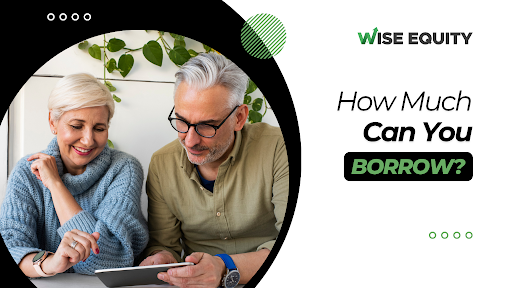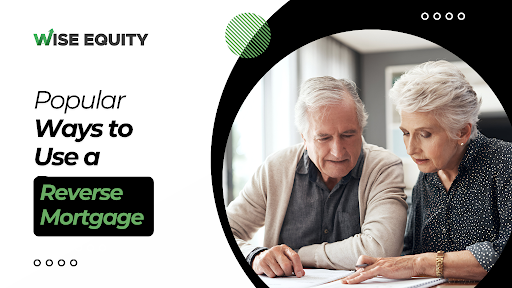Are you a Canadian homeowner over 55, sitting on a fully paid-off or nearly paid-off home? You’re not alone. Many older homeowners find themselves rich in assets but short on cash flow. That’s why this Reverse Mortgage Guide exists—to help you unlock your home equity without giving up your home or taking on new monthly bills.
Whether you’re just starting to explore your options or actively looking for solutions, this guide will walk you through every step with clarity.
What Is a Reverse Mortgage?
In simple terms, a reverse mortgage is a loan that allows you to borrow money using the equity in your home—without selling or moving. Rather than making monthly payments to a lender, the lender pays you. This can come in the form of a lump sum, monthly installments, or a line of credit.
Unlike traditional loans, reverse mortgages are tailored for retirees. You don’t need to repay anything until you move, sell the house, or pass away. Until that time, you continue to live in your home just like before.
As a result, this financial product is gaining popularity among Canadians looking for a secure and flexible way to supplement their income during retirement.
Who Is Eligible for a Reverse Mortgage in Canada?
To qualify, you must meet some basic criteria:
- Be at least 55 years old
- Own and live in your primary residence
- Have sufficient equity in your home
- Live in an eligible location (urban or suburban is preferred)
Interestingly, your credit score and income are not major deciding factors. That’s good news for retirees who no longer have a traditional paycheck. What really matters is the value of your property and how much of it you own.
In addition, the type of property can impact eligibility. Detached homes, townhouses, and some condos typically qualify. However, mobile homes and properties in remote areas might not meet lender requirements.

How Much Can You Borrow?
One of the most common questions people ask is, “How much can I actually borrow?” The amount depends on several factors:
- Your age (older borrowers can access more)
- The appraised value of your home
- Your home’s location and condition
Generally, lenders allow you to borrow up to 55% of your home’s appraised value. As a rule of thumb, someone aged 55 may access around 15–20%, whereas someone aged 85 could qualify for close to the full 55%.
What’s even better? The funds you receive are tax-free and do not affect your eligibility for government benefits like CPP, OAS, or GIS. Therefore, a reverse mortgage offers more flexibility than most retirement income sources.
Step-by-Step Application Process
Now that you understand the basics, let’s walk through the application process. Here’s how it typically unfolds:
1. Initial Consultation
To begin, you’ll meet with a reverse mortgage guide specialist who will explain the product, assess your eligibility, and help determine if it fits your goals.
2. Property Appraisal
After your consultation, an independent appraiser evaluates your home to determine its current market value.
3. Review & Legal Advice
Next, the lender provides a detailed loan agreement. You are legally required to seek independent legal advice to ensure you fully understand the terms.
4. Final Approval
Once everything checks out—including legal advice and appraisal—the lender issues the final approval and funding documents.
5. Receive the Funds
Finally, the funds are released based on your preferred method: lump sum, monthly payments, or line of credit. You now have access to your home equity—without selling it.
Providers like Wise Equity streamline the entire process and offer support from consultation to funding.
Pros and Cons of a Reverse Mortgage
✅ Advantages:
- No monthly mortgage payments required
- Stay in your home while accessing equity
- Flexible payment options (lump sum, monthly, or both)
- Does not affect government retirement benefits
- Tax-free cash for any purpose
❌ Disadvantages:
- Interest accumulates over time
- Reduces the equity left in your home
- Early repayment may involve fees
- Not ideal for short-term housing plans
Ultimately, the pros can significantly outweigh the cons—especially if staying in your home is a top priority. Companies like Wise Equity can help evaluate if this option truly aligns with your retirement strategy.

Popular Ways to Use a Reverse Mortgage
People take out reverse mortgages for various reasons. In many cases, it becomes a lifeline for:
- Covering monthly living expenses
- Renovating the home for better accessibility
- Paying off high-interest debt
- Funding travel and leisure in retirement
- Helping adult children or grandchildren financially
Whatever your reason, a reverse mortgage guide provides flexibility. And with the right guidance, you can make sure you’re using the funds wisely.
Reverse Mortgage vs HELOC: What’s the Difference?
Many Canadians compare a reverse mortgage to a Home Equity Line of Credit (HELOC). While both unlock home equity, they operate very differently.
| Feature | Reverse Mortgage | HELOC |
| Age Requirement | 55+ | None |
| Monthly Repayments | Not required | Required |
| Credit Score Needed | No | Yes |
| Impact on Benefits | None | None |
| Repayment Timing | Sale, move, or death | Monthly |
In short, if you’re on a fixed income and don’t want another monthly payment, a reverse mortgage is likely the better option. This is where Wise Equity can help compare what’s best for your individual needs.
Is a Reverse Mortgage the Right Choice?
By now, you might be wondering if this is the right move. Ask yourself:
- Do I want to stay in my home for the long term?
- Am I 55 or older with significant home equity?
- Do I want more financial flexibility without monthly payments?
If you answered yes to most of these, it’s worth exploring further. Make sure to talk to a financial advisor—or contact a reputable provider like Wise Equity—to discuss the details.
Conclusion
This Reverse Mortgage Guide is designed to help Canadian homeowners navigate their options with confidence. With no monthly payments, access to tax-free funds, and the ability to age in place, reverse mortgages can be a powerful tool for financial independence.
If you’re ready to take the next step, consider booking a free consultation with Wise Equity or another trusted provider. Your home has supported you for years—it might be time to let it return the favor.

